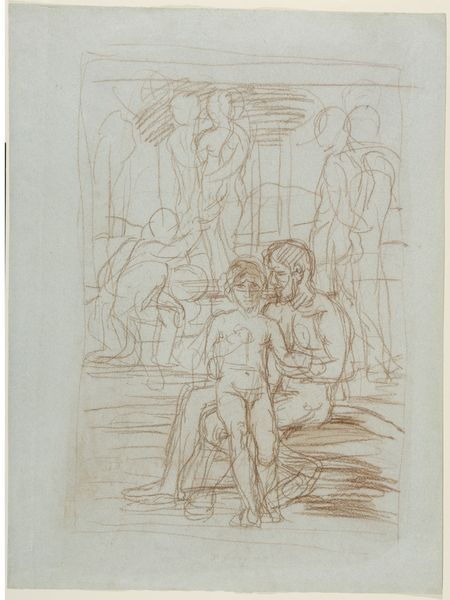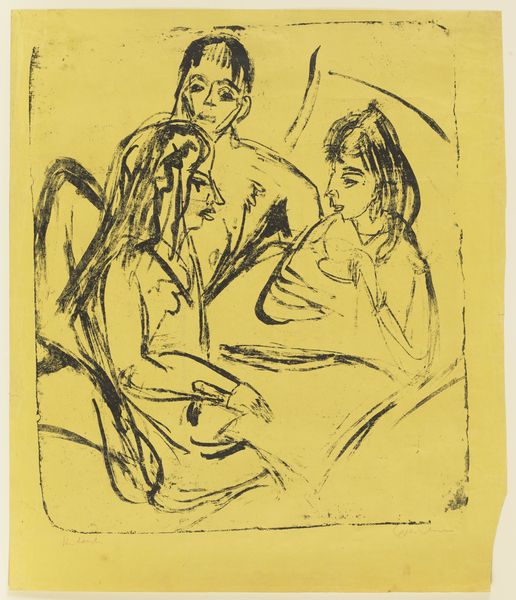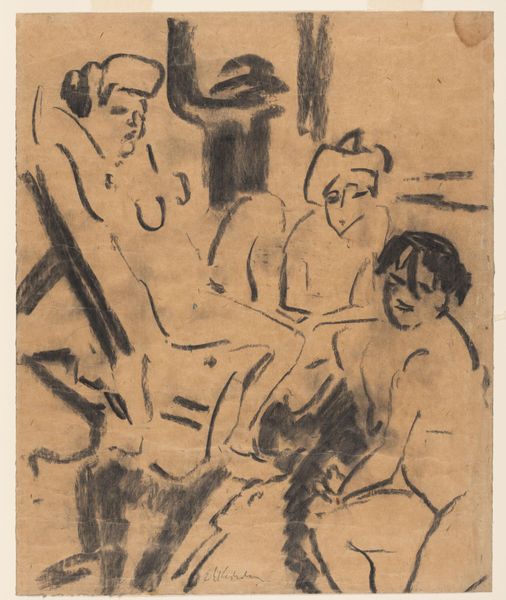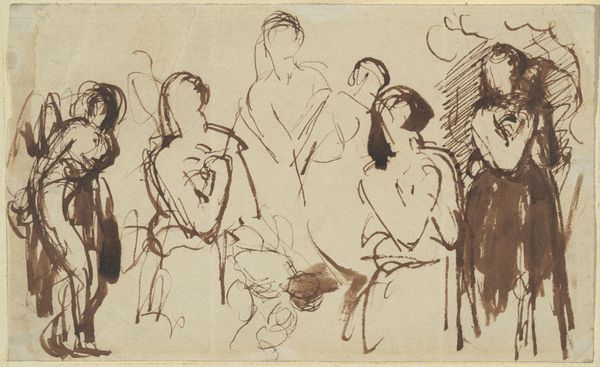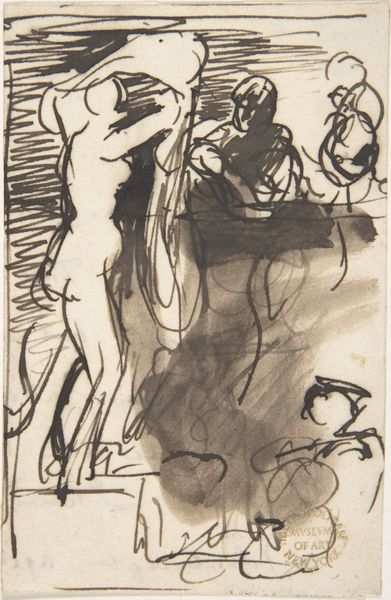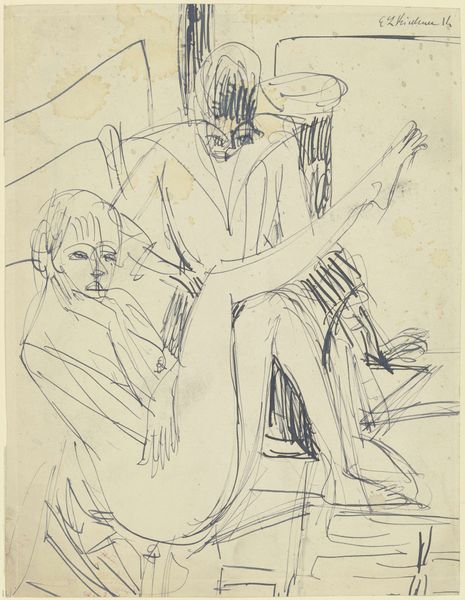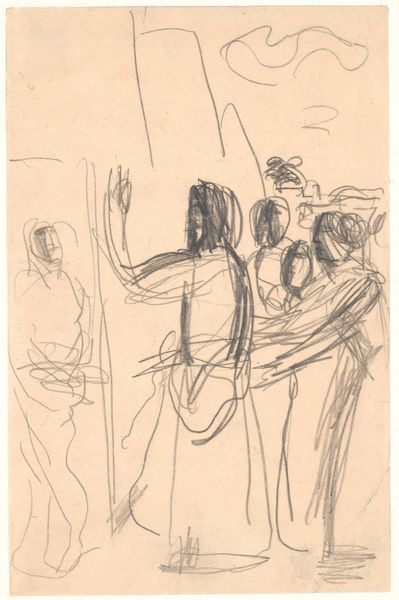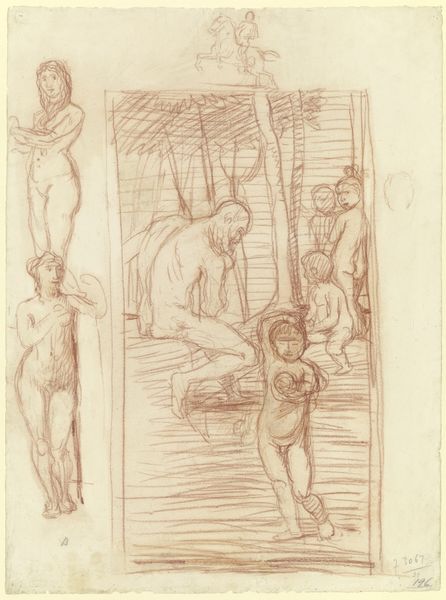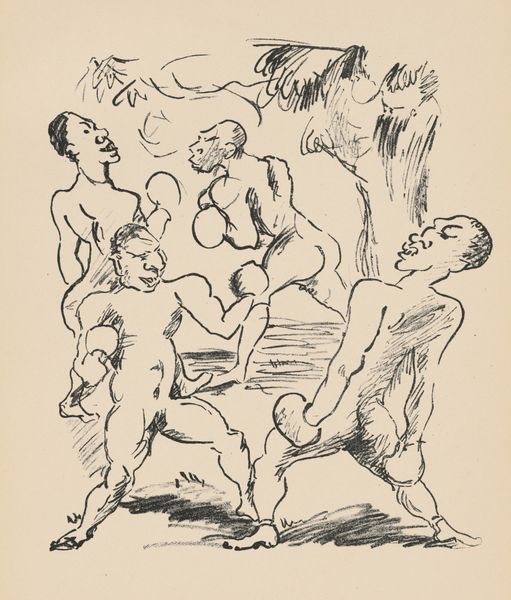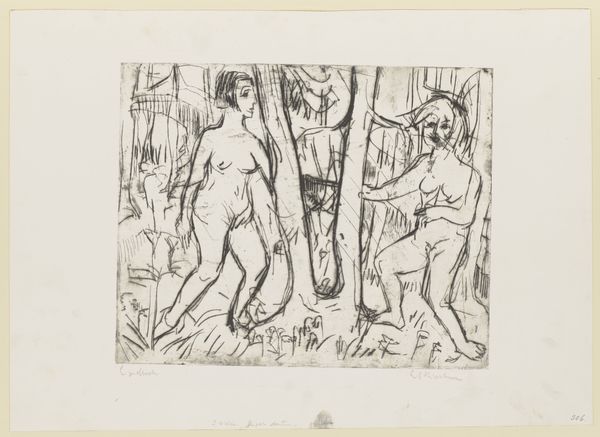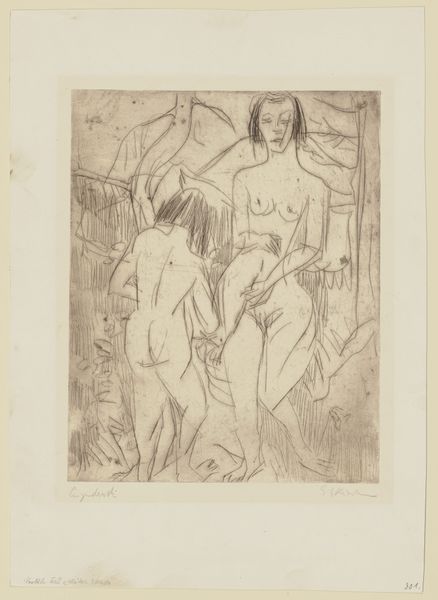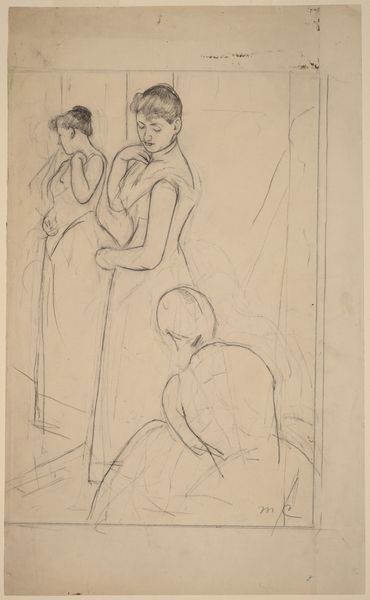
drawing, pencil
#
portrait
#
drawing
#
figuration
#
pencil
#
expressionism
Dimensions: 296 mm (height) x 216 mm (width) (bladmaal)
Curator: This is Edvard Munch’s “The Group in Copenhagen,” a pencil drawing dating from 1909-1910. Editor: The frenetic energy practically leaps off the paper! The figures feel grotesque and intensely alive simultaneously. It’s rendered on a rather humble piece of paper, isn’t it? Torn at the bottom edge too; very interesting! Curator: The rough quality is telling. This sketch likely originated as a preliminary study. The visible artistic process grants an immediate connection to the rawness of the scene, of a group reveling, or perhaps dissolving, in their excesses. Editor: Exactly. Looking at it materially, the hasty lines are a kind of shorthand for raw experience. It’s expressionistic, naturally. Consider the cheapness of pencil on paper against the implied wealth in this celebratory drinking scene. Who is profiting and who is simply spending? Curator: Symbolically, I see this captured moment embodying anxieties about social bonds, belonging, and dissolution. Munch seems less interested in individual portraits and more in conveying an atmosphere of barely-controlled emotional states. The ambiguity – celebration or despair – heightens the psychological impact. Editor: And the physical drawing enacts that anxiety! Look at those thick, repetitive lines and almost compulsive mark-making that define the figures. It speaks of labor – both physical and psychological labor of image-making, not to mention whatever work allows the group of friends to get together to spend their earnings. Curator: True. The visual instability creates a powerful tension between depicting a scene and expressing an inner world. The upraised arms read almost as aggressive assertions of joy – but possibly a forced joy. Munch leaves us with that unresolved emotional resonance. Editor: The image resonates not only because it shows consumption but because its materiality signals something important about its making and circulation as an image that may carry complicated cultural weight of bohemian excess and labor conditions. Curator: I find the emotional core and visual language enduringly powerful, offering insights into our constant striving for, and struggles with, connection. Editor: Absolutely. Seeing the making, and how the image reflects broader material circumstances makes it so affecting.
Comments
No comments
Be the first to comment and join the conversation on the ultimate creative platform.

